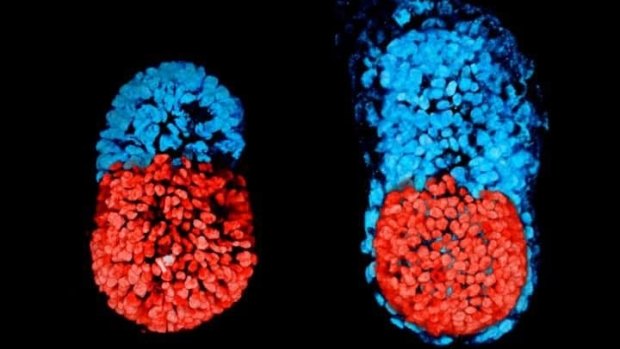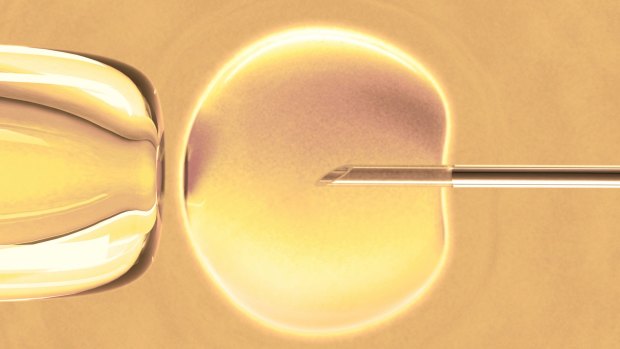This was published 7 years ago
Artificial life may soon be possible, as mouse embryos created from stem cells in lab
By Sarah Knapton
Artificial human life could soon be grown in a laboratory, scientists believe, after they successfully created an embryo using only stem cells for the first time.
Cambridge University used two types of mouse stem cells to create a living mouse embryo which formed after just four days. It is the first time scientists have ever been able to create a living embryo without using sperm or an egg.

Artificial mouse embryos grow in the lab.Credit: Cambridge University
The breakthrough, described as a "masterpiece" in bio-engineering, could eventually allow scientists to grow artificial human embryos in the lab.
Growing embryos would help researchers to study the very early stages of human life and understand why so many pregnancies fail. But it is likely to prove controversial and raise ethical questions about what constitutes human life.

IVF cycles in Australia dipped in 2017 but a bigger concern for big ASX companies specialising in the area is competition from low-cost providers. Credit: iStock
Dr Dusko Ilic, from King's College London, said the research was a "masterpiece" for creating the earliest steps of life in a lab. "This is science at its best," he said.
Currently scientists can carry out experiments on leftover embryos from IVF treatments, but they are in short supply and must be destroyed after 14 days.
Researchers say that being able to create unlimited numbers of artificial embryos in the lab could speed up research while potentially removing some of the ethical boundaries.
"We think that it will be possible to mimic a lot of the developmental events occurring before 14 days using human stem cells with a similar approach to our technique using mouse stem cells," said Professor Magdalena Zernicka-Goetz, of the university's department of physiology, development and neuroscience, who led the research.
She said: "We are very optimistic that this will allow us to study key events of this critical stage of human development without actually having to work on embryos.
"Knowing how development normally occurs will allow us to understand why it so often goes wrong."
The artificial embryos were created using genetically engineered stem cells coupled with extra-embryonic trophoblast stem cells (TSCs) which form in the placenta in a normal pregnancy.
Previous attempts to grow them using only one kind of stem cell proved unsuccessful because the cells would not assemble into their correct positions.
But scientists discovered that when they added the second "placental" stem cells, the two types began to talk to each other, effectively telling each other where to go.
Together they melded together to form an embryonic structure, with two distinct clusters of cells at each end, and a cavity in the middle in which the artificial embryo would continue to develop.
The embryo created could not have developed into a mouse foetus without more stem cells being added to create a yolk which would have nourished and helped it to grow. However, scientists believe this would have been possible, but chose not to do so on ethical grounds.
Critics warn that allowing embryos to be grown for science opens the door to designer babies and genetically modified humans. Dr David King, director of Human Genetics Alert, an independent secular watchdog group, said: "What concerns me about the possibility of artificial embryos is that this may become a route to creating GM or even cloned babies."
The study was published in Science and was funded by the Wellcome Trust and the European Research Council.
The Telegraph, London